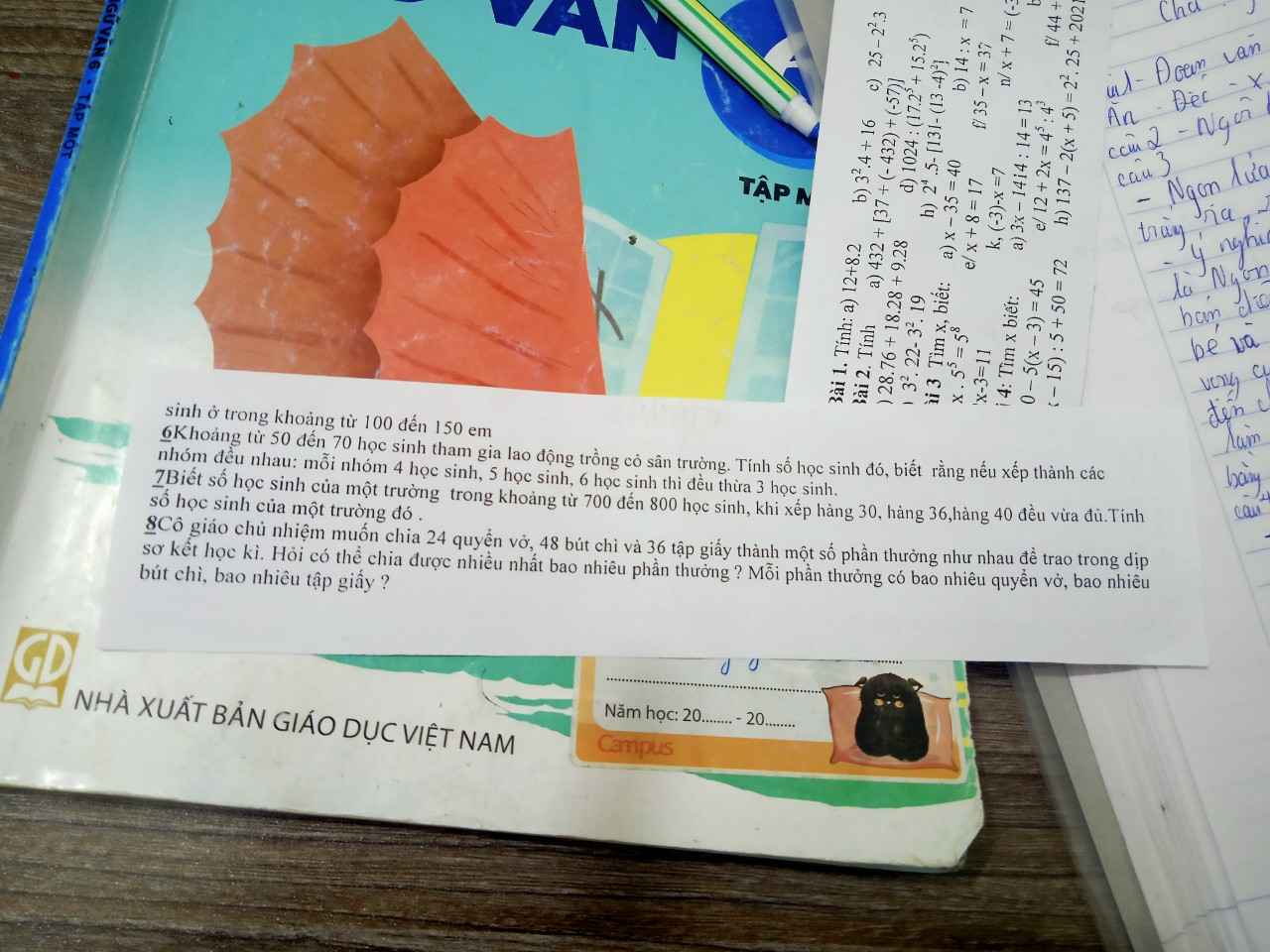
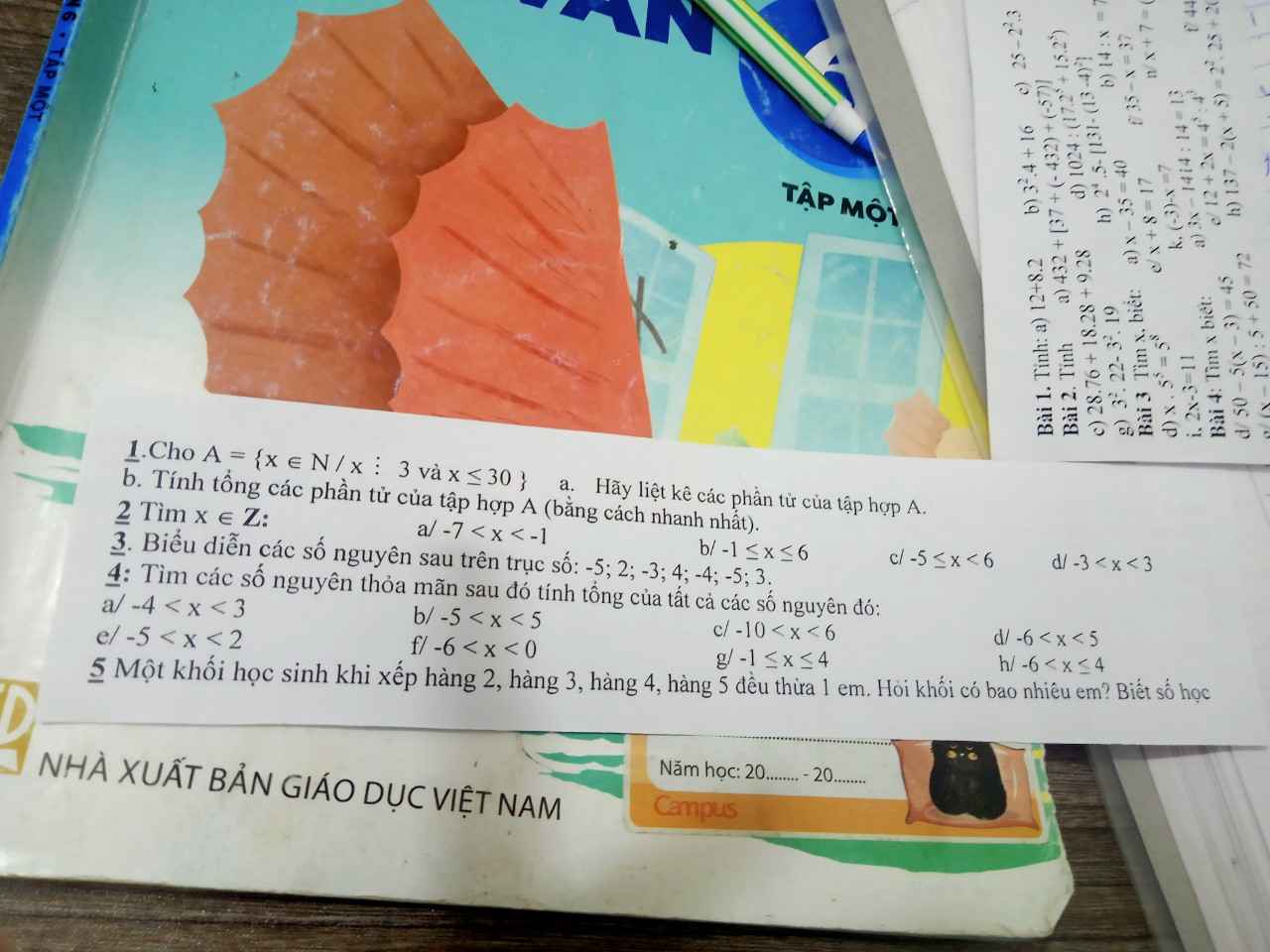
mấy bạn giúp mik với tối nay mik 6h mình cần rồi cảm ơn các bạn

mấy bạn giúp mình nhanh phần tự luận với 6h tối nay mình cần rồi ai làm nhanh mình tick nha !!!!!!!!!!!!!! cảm ơn các bạn trước
Mấy bạn giúp mik với, mik cần gấp lắm! Xíu nữa thầy kiểm tra mik rồi! Cảm ơn mấy bạn nhé!
1 How was the lost man found by the police?
2 It was declared that she had won the competition
3 Has the window of the laboratory been changed?
4 Peter asked Janet if he could borrow her typwriter
5 My grandmother told me to feed her dog while she was away
6 My younger sister told me to lend her some more money
7 If I were tall enough,I would join the basketball team
8 If we don't hurry up, we will be late for the exam
9 If he hadn't gone out late last night, he wouldn't have been punished
10 I wish the weather hadn't been bad yesterday
Viết đoạn văn về dân tộc Tày bằng tiếng Anh
Mong các bạn giúp mình cần gấp ạ =)) (tối nay phải nộp rồi àm mình bí quá xin cảm ơn mấy bạn <3)
The Tay, with local groups Pa dí, Thổ, Ngan, Phén, Thu Lao, is an ethnic group of 54 ethnic groups in Viet Nam. Tay people speak Tay, a Tai dialect of the Tai-Kadai language. Tay people live mainly in lowland areas of northern Vietnam. The Tay was previously known as the Tho (although this name is now used to refer to a different ethnic group, see Turks). Tay people have the second largest population in Vietnam. Tay people, Nung have a close relationship with the Choang people in China.Tay people mainly reside in the northern midland and mountainous provinces (1,400,519 people in 1999). In addition, in the recent time, the Tay also migrated to some provinces in the Central Highlands like Dak Lak and Lam Dong.The Tay are usually at the foot of the mountain or along the stream. The name is often referred to by the name of hills, fields, rivers. Each village has 15 to 20 houses. Large villages divided into many small villages.Tay dressed in indigo. Traditional Tay costumes are made from self-made cotton yarn, dyed indigo on men's and women's clothes, almost without decorative pattern. Tay clothing can be considered one of the simplest outfits of 54 ethnic groups. The costume is simple but meaningful.Then singing, singing, singing sli are used in various activities, popular folk songs of the Tay. Musical instruments such as the Micro, Shake. Chess is an instrument that is present in all spiritual activities of the Tay, such as soul in the folk dance of the Tay. In this life, the sex acts as a means of communicating bold identity.Traditional houses are usually on stilts, lands and roofs with grass and some border areas have defense types. In the house to distinguish male rooms outside, women in the chamber. Most popular are 3-room, 2-roofed houses (no chop), logs of land or bushes, surrounding woods, roofs of grass, picturesque Tay people settle in groups of about 15 to 20 households. Tay people worship ancestors and animals. The Tay ancestors' altar is placed in the middle of the house and made into a private space and revered. Pregnant women and their newborns are not allowed to sit or lie on chairs or beds in front of the altar. In the Tay religion, the most important feast day of the Tay people is usually the last day of the lunar month.The life of the Tay is often associated with nature, so the food and foodstuff of the Tay people are products obtained from production activities in areas with forests, rivers, streams and hills surrounding. Some famous dishes are: sticky egg rolls, sticky rice balls, sour bamboo shoots, stigma.
The Tay, with local groups Pa dí, Thổ, Ngan, Phén, Thu Lao, is an ethnic group of 54 ethnic groups in Viet Nam. Tay people speak Tay, a Tai dialect of the Tai-Kadai language. Tay people live mainly in lowland areas of northern Vietnam. The Tay was previously known as the Tho (although this name is now used to refer to a different ethnic group, see Turks). Tay people have the second largest population in Vietnam. Tay people, Nung have a close relationship with the Choang people in China.Tay people mainly reside in the northern midland and mountainous provinces (1,400,519 people in 1999). In addition, in the recent time, the Tay also migrated to some provinces in the Central Highlands like Dak Lak and Lam Dong.The Tay are usually at the foot of the mountain or along the stream. The name is often referred to by the name of hills, fields, rivers. Each village has 15 to 20 houses. Large villages divided into many small villages.Tay dressed in indigo. Traditional Tay costumes are made from self-made cotton yarn, dyed indigo on men's and women's clothes, almost without decorative pattern. Tay clothing can be considered one of the simplest outfits of 54 ethnic groups. The costume is simple but meaningful.Then singing, singing, singing sli are used in various activities, popular folk songs of the Tay. Musical instruments such as the Micro, Shake. Chess is an instrument that is present in all spiritual activities of the Tay, such as soul in the folk dance of the Tay. In this life, the sex acts as a means of communicating bold identity.Traditional houses are usually on stilts, lands and roofs with grass and some border areas have defense types. In the house to distinguish male rooms outside, women in the chamber. Most popular are 3-room, 2-roofed houses (no chop), logs of land or bushes, surrounding woods, roofs of grass, picturesque Tay people settle in groups of about 15 to 20 households. Tay people worship ancestors and animals. The Tay ancestors' altar is placed in the middle of the house and made into a private space and revered. Pregnant women and their newborns are not allowed to sit or lie on chairs or beds in front of the altar. In the Tay religion, the most important feast day of the Tay people is usually the last day of the lunar month.The life of the Tay is often associated with nature, so the food and foodstuff of the Tay people are products obtained from production activities in areas with forests, rivers, streams and hills surrounding. Some famous dishes are: sticky egg rolls, sticky rice balls, sour bamboo shoots, stigma.
THAM KHẢO
The Tay, with local groups Pa dí, Thổ, Ngan, Phén, Thu Lao, is an ethnic group of 54 ethnic groups in Viet Nam. Tay people speak Tay, a Tai dialect of the Tai-Kadai language. Tay people live mainly in lowland areas of northern Vietnam. The Tay was previously known as the Tho (although this name is now used to refer to a different ethnic group, see Turks). Tay people have the second largest population in Vietnam. Tay people, Nung have a close relationship with the Choang people in China.Tay people mainly reside in the northern midland and mountainous provinces (1,400,519 people in 1999). In addition, in the recent time, the Tay also migrated to some provinces in the Central Highlands like Dak Lak and Lam Dong.The Tay are usually at the foot of the mountain or along the stream. The name is often referred to by the name of hills, fields, rivers. Each village has 15 to 20 houses. Large villages divided into many small villages.Tay dressed in indigo. Traditional Tay costumes are made from self-made cotton yarn, dyed indigo on men's and women's clothes, almost without decorative pattern. Tay clothing can be considered one of the simplest outfits of 54 ethnic groups. The costume is simple but meaningful.Then singing, singing, singing sli are used in various activities, popular folk songs of the Tay. Musical instruments such as the Micro, Shake. Chess is an instrument that is present in all spiritual activities of the Tay, such as soul in the folk dance of the Tay. In this life, the sex acts as a means of communicating bold identity.Traditional houses are usually on stilts, lands and roofs with grass and some border areas have defense types. In the house to distinguish male rooms outside, women in the chamber. Most popular are 3-room, 2-roofed houses (no chop), logs of land or bushes, surrounding woods, roofs of grass, picturesque Tay people settle in groups of about 15 to 20 households. Tay people worship ancestors and animals. The Tay ancestors' altar is placed in the middle of the house and made into a private space and revered. Pregnant women and their newborns are not allowed to sit or lie on chairs or beds in front of the altar. In the Tay religion, the most important feast day of the Tay people is usually the last day of the lunar month.The life of the Tay is often associated with nature, so the food and foodstuff of the Tay people are products obtained from production activities in areas with forests, rivers, streams and hills surrounding. Some famous dishes are: sticky egg rolls, sticky rice balls, sour bamboo shoots, stigma.
các bạn Giúp mik với. Bài 4: Tìm x là đc ,mấy bài trên mik làm rồi. Cảm ơn các bạn nhiều
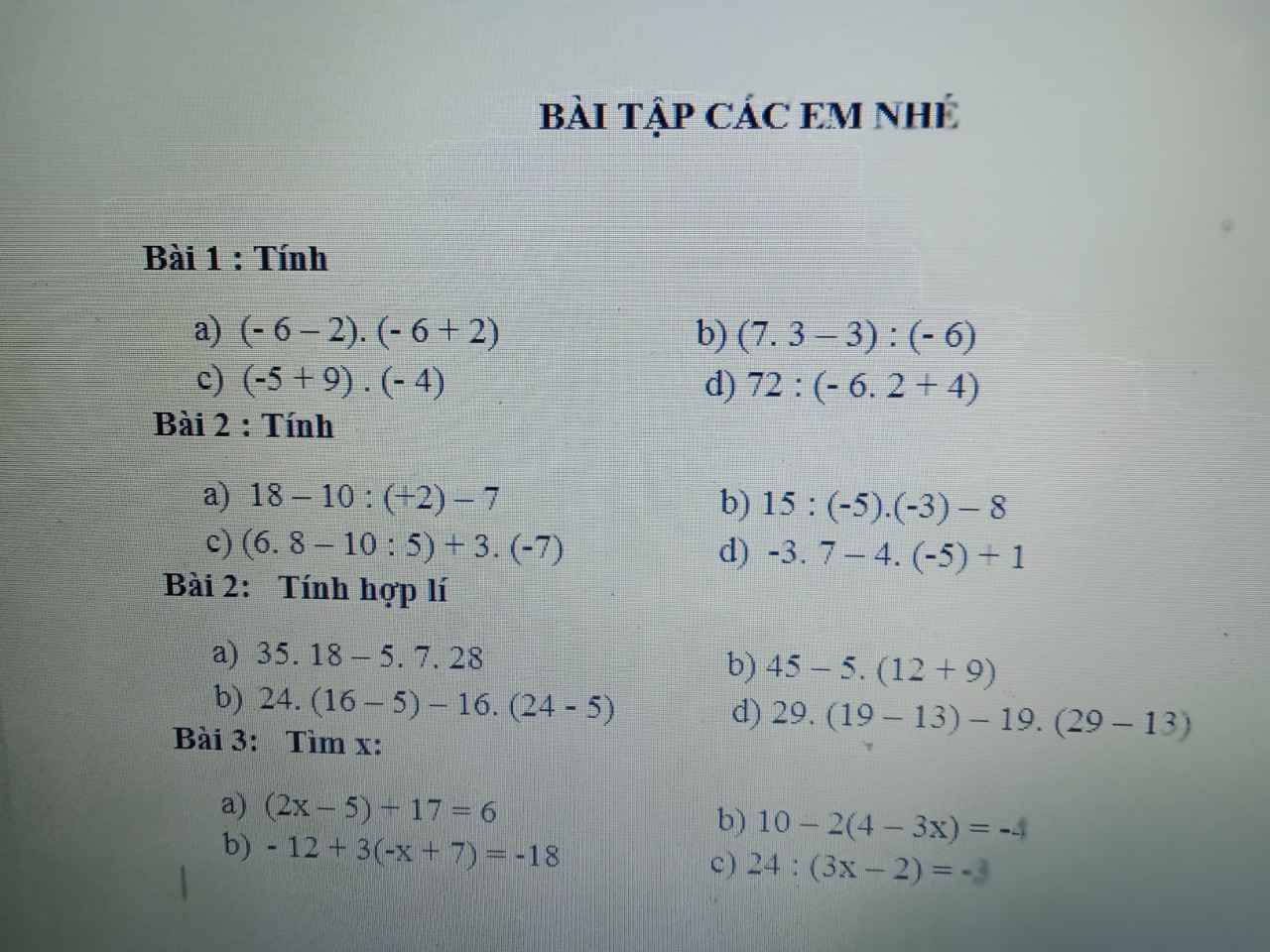
Bài 4: Tìm x
a. \(\left(2x-5\right)+17=6\)
\(2x-5=6-17\)
\(2x-5=-11\)
\(2x=-11+5\)
\(2x=-6\)
\(x=-3\)
b.\(10-2\left(4-3x\right)=-4\)
\(-2\left(4-3x\right)=-4-10\)
\(-8+6x=-14\)
\(6x=-6\)
\(x=-1\)
c. \(-12+3\left(-x+7\right)=-18\)
\(3\left(-x+7\right)=-18+12\)
\(-3x+21=-6\)
\(-3x=-27\)
\(x=9\)
d.\(24:\left(3x-2\right)=-3\)
\(24:\left(-3\right)=3x-2\)
\(-8=3x-2\)
\(-6=3x\)
\(x=-2\)
Mấy bạn giúp mik với! Mik cần gấp lắm! Cảm ơn mấy bạn nhé!
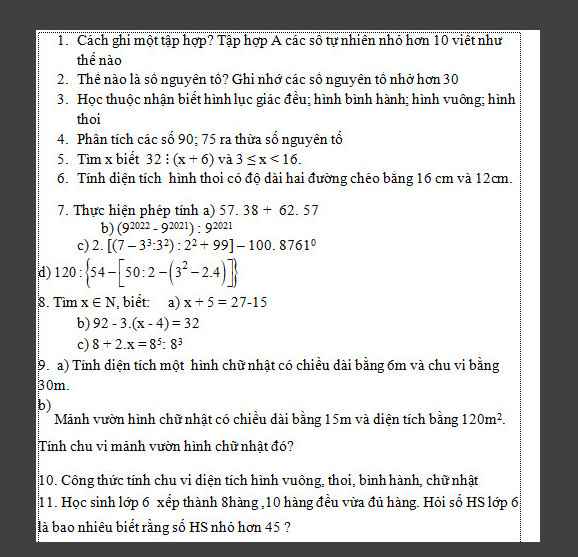
các cậu giúp mình với tối nay mình cần rùi cảm ơn các bạn
Khi ghi 1 tập hợp phải phi tên tập hợp,đóng mở ngoặc nhọn và ngăn cách các phần tử bằng dấu chấm phẩy
các bạn giúp mik nhé, các bạn cứ từ từ làm đến 7h30 tối mình mới cần. Nhớ là tối nay mik mới cần nhé không cần vội.
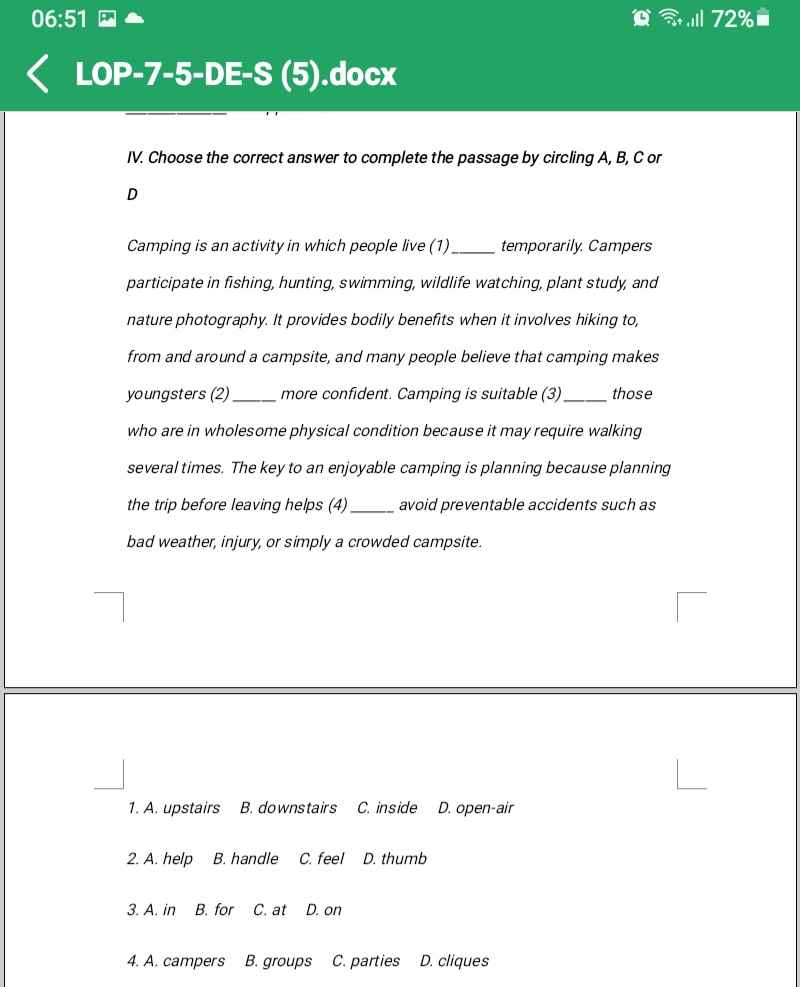
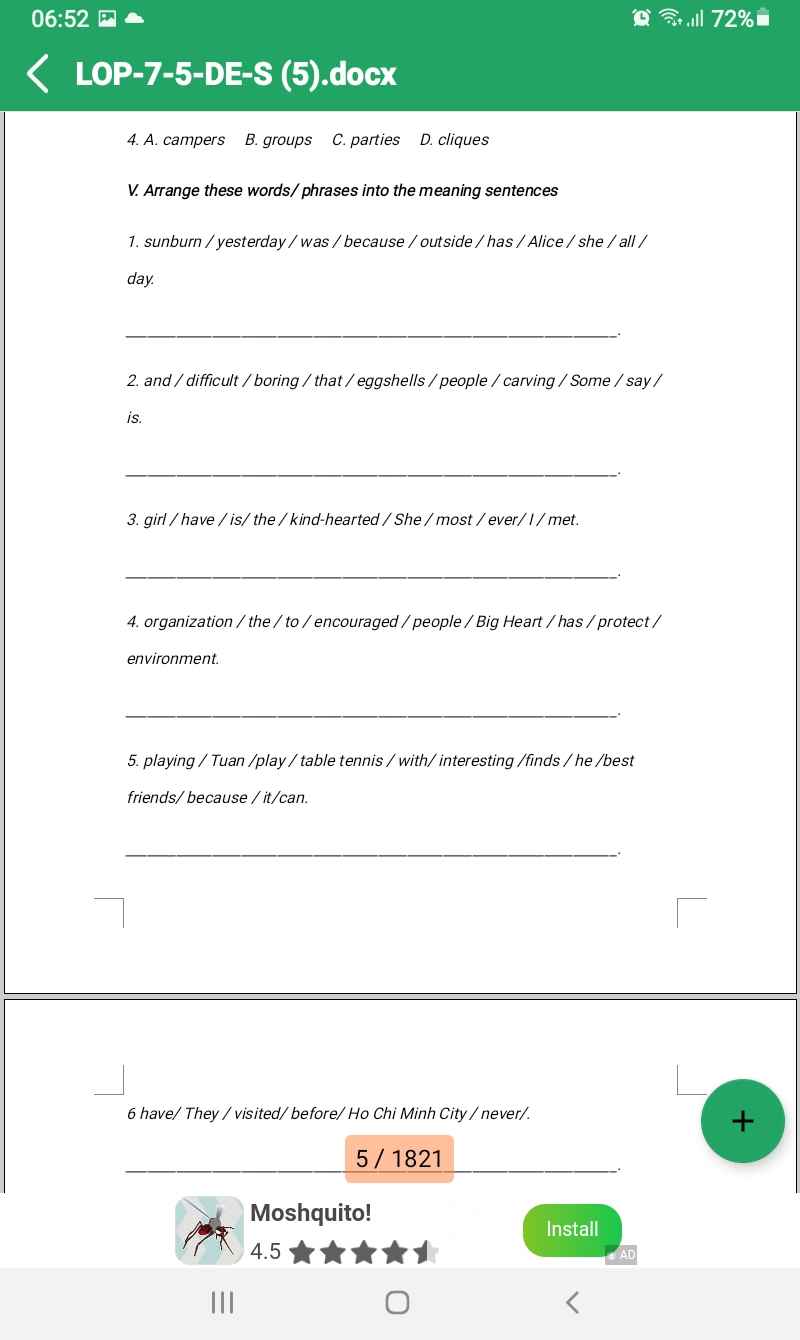
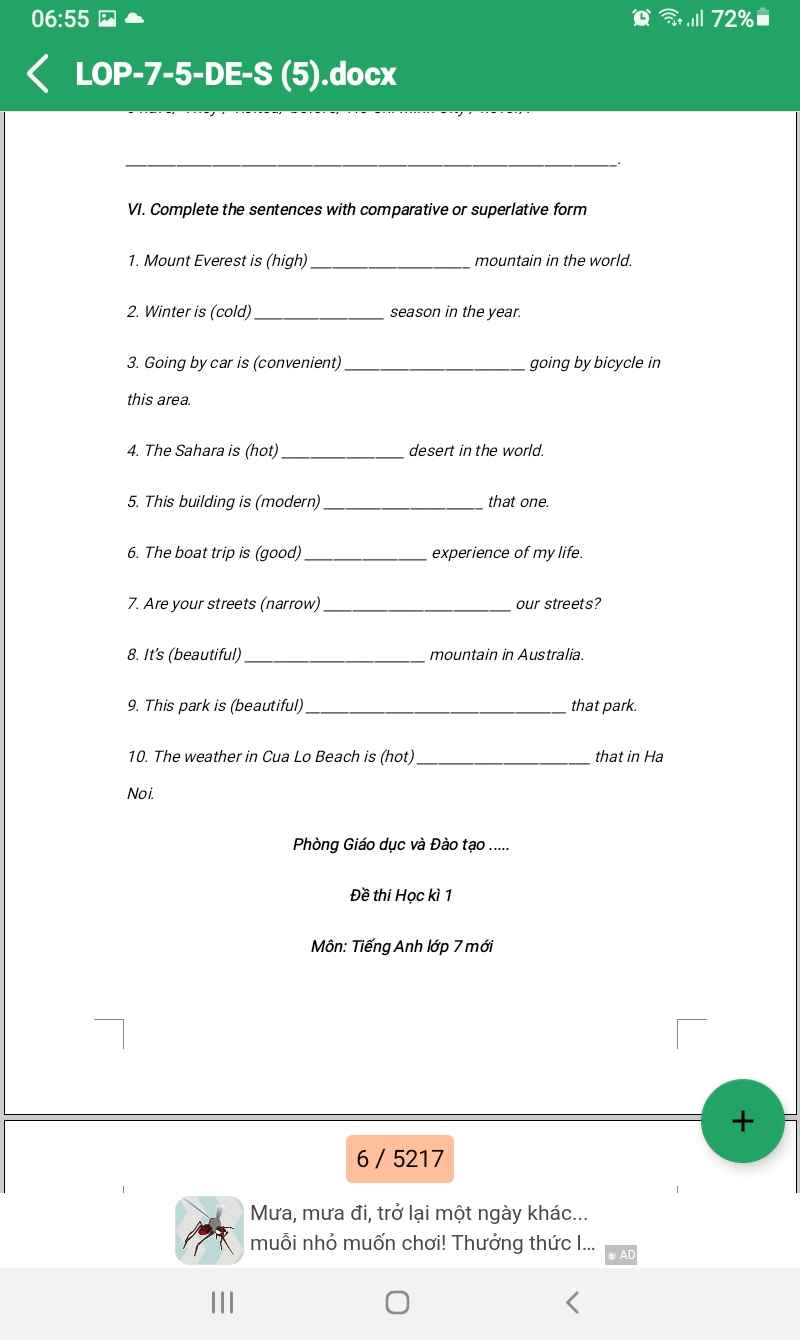
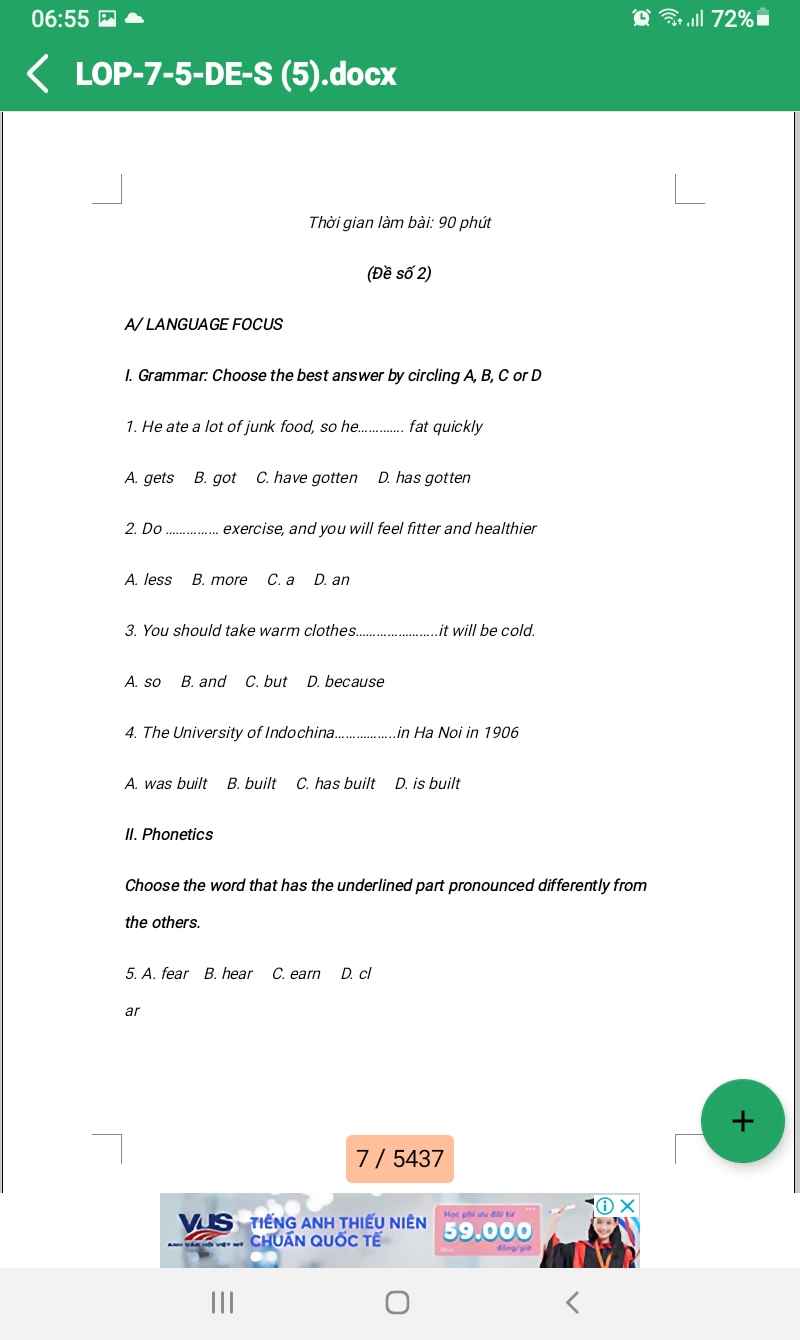
III.
1. singing
2. Bought
3. English
4. On
5. Competition
6. There
IV.
1. D
2. C
3. B
4. A
Cả bộ đề hay sao mà dài thế ạ:/
kể về một lần bị phê bình
mấy bạn giúp mik làm đề này với mai mik cần r cảm ơn các bạn trước
Tham khảo
Trong cuộc sống, mỗi chúng ta không ít lần mắc lỗi nhưng có những lỗi lầm đã gây ra không bao giờ chúng ta quên được. Bây giờ, cứ mỗi lần nhớ đến cô giáo dạy văn năm lớp bảy, tôi lại thấy trong lòng mình ray rứt vì đã vô lễ với cô.
Tôi vốn là một đứa trẻ bất hạnh nhất trên đời – tôi luôn nghĩ về bản thân mình như vậy. Mẹ tôi sinh ra tôi nhưng tôi không có bố. Từ bé tôi đã luôn bị mọi người xung quanh khinh miệt, giễu cợt là “đồ con hoang”. Nhiều bà mẹ không cho con họ chơi với tôi. Tôi sống thui thủi như thế với mẹ trong căn nhà nhỏ tồi tàn cuối xóm. Từ bé, tôi không thấy ai tốt bụng và thương tôi ngoài mẹ tôi. Hai mẹ con tôi sống trơ trọi không họ hàng trong sự khinh miệt của mọi người xung quanh. Trong mắt tôi, loài người thật xấu xa và độc ác – trừ người mẹ hiền lành mà tôi hết lòng thương yêu và kính trọng. Đến tuổi đi học, tôi không chơi với bạn nào trong lớp, luôn lãnh đạm, thờ ơ với mọi người xung quanh.
Năm ấy, tôi học lớp bảy. Trong giờ văn, hôm nay lớp học văn nghị luận chứng minh. Cô giáo giảng đề “Lá lành đùm lá rách”. Cô đã dùng nhiều lập luận và dẫn chứng gần gũi, cụ thể, thiết thực để cho chúng tôi thấy đấy là lòng nhân ái của người Việt Nam ta. Giảng xong, cô cho lớp viết bài, tiết sau cô sẽ sửa. Tiết học sau, cô gọi một số bạn nộp bài cho cô sửa – trong đó có tôi. Cô gọi tôi lên và hỏi: “Toàn, tại sao em lại không làm bài mà để giấy trắng? Em không hiểu bài à? Không hiểu chỗ nào cô sẽ giảng lại cho?”
Phản ứng của tôi bất ngờ đến mức làm cả lớp sững sờ nhìn tôi. Tôi gân cổ lên trả lời cô: “Em không làm vì em không thèm làm chứ không phải không hiểu. Toàn là nói dối, bịa đặt, trên đời này làm gì có lòng nhân ái, người yêu thương người. Tại sao em lại chứng minh điều dối trá như thế là đúng cơ chứ?” Tôi nói mà không biết mình đang nói gì. Có lẽ đó là những điều uất ức dồn nén từ lâu hôm nay bộc phát. Cả lớp đổ dồn những cặp mắt ngỡ ngàng về phía tôi. Còn cô giáo thì mặt tái xanh, tôi thấy cô giận đến run người. Cô không nói lời nào mà bước nhanh ra khỏi lớp. Tôi biết cô rất giận. Cô sợ không kìm chế được cảm xúc nên bước ra ngoài chăng? Tôi thoáng ân hận vì quá lời với cô nhưng tôi không thấy mình sai. Lớp trưởng đến bên tôi nhẹ nhàng: “Tại sao cậu vô lễ như thế? Đi theo xin lỗi cô đi!” Tôi giận dữ: “Tớ không nói sai. Tớ không có lỗi!”
Sau sự việc trên, tôi đinh ninh mình sẽ bị đuổi học hoặc chí ít là mời phụ huynh. Tôi chỉ lo mẹ sẽ buồn. Cuối giờ, cô gọi tôi lên gặp riêng cô. Tôi biết mình sẽ bị khiển trách rất nặng. Tôi bước vào phòng giáo viên, cô ngồi đó vẻ mặt buồn rười rượi. Trên đôi mắt đen lay láy của cô còn ngân ngấn nước. Tôi đoán cô vừa khóc và thấy ngạc nhiên. Tôi càng ngạc nhiên hơn khi cô không trách mắng tôi mà nhẹ nhàng phân tích cho tôi thấy rằng tôi nghĩ như thế là lệch lạc. Các bạn đã luôn gần gũi và giúp đỡ tôi, cô đã luôn quan tâm và yêu thương tôi. Tôi vô cùng ân hận. Tôi lí nhí xin lỗi cô. Cô dịu dàng xoa vào đầu tôi và bảo: “Em hiểu được như thế là tốt và đừng nên mất niềm tin vào tình người như thế! Cô không giận em đâu”. Dù cô nói vậy nhưng tôi vẫn thấy mình thật có lỗi khi vô lễ với cô.
Tôi thật biết ơn cô vì đã dạy tôi bài học về tấm lòng độ lượng và giúp tôi lấy lại niềm tin về tình người.
Mình cần gấp lời giải, mong các bạn giúp Mik với, Mik cảm ơn 
Nếu đi với vận tốc \(v_1=12\) km/h thì:
\(s=v_1t_1=12t_1\) (km)
Nếu đi với vận tốc \(v_2=v_1+3=15\) km/h thì:
\(s=v_2t_2=15t_2\) (km)
\(\Rightarrow12t_1=15t_2\)
Mà: \(t_1=t_2+1\)
\(\Rightarrow12\left(t_2+1\right)=15t_2\)
\(\Rightarrow t_2=4\) (h)
\(\Rightarrow S=60\) (km)